I have an issue that I am struggling to grasp. Any help would be greatly appreciated.
I have an Object, and I assign the current object state to a property on the current object.
example below:
var product = {
ropeType: 'blah',
ropePrice: 'blah',
ropeSections: {
name: 'blaah',
price: 'blaah'
},
memory: false
}
product.memory = product;
Now when I look at the product object within the console I get a inifinite recursion of Product.memory.Product.memory.Product....
screenshot below:

I know its something to do with that an object references itself, but I cannot seem to grasp the concept. Could someone explain?
The reason I am trying to do something like this is to save in local storage the current state of the object.
I hope I have made sense.